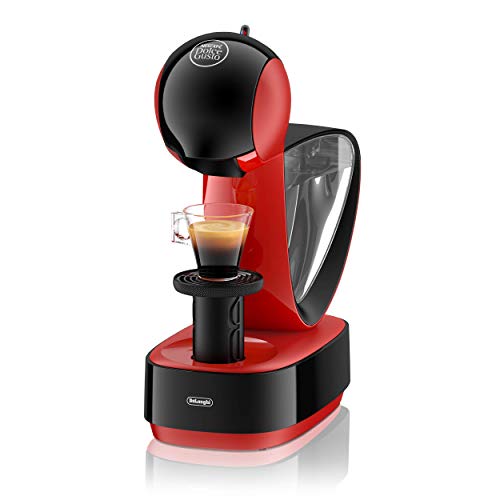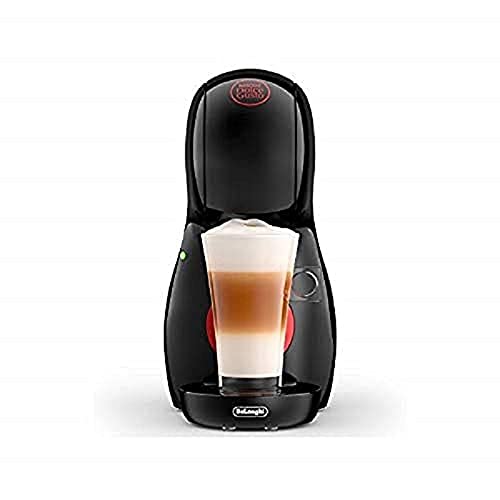Five Killer Quora Answers On Pod-Making Machines
페이지 정보

본문
 Detergent Pod-Making Machines
Detergent Pod-Making MachinesThere are many different pod machines available, from K-Cup (r) and Tassimo (tm) to Nespresso (tm) or Senseo(tm). They all function in the same way by heating water and pressing the button.
 The pod-making procedure is more complicated yet it's still simple enough to do yourself. Here are a few things to look out for when purchasing a coffee pod machine-making equipment:
The pod-making procedure is more complicated yet it's still simple enough to do yourself. Here are a few things to look out for when purchasing a coffee pod machine-making equipment:Detergent pod and bean coffee machine Manufacturing
Detergent pods are convenient and efficient. They are also green. But how do they get them? The process is surprisingly simple. A single-dose pod contains a dissolvable film that dissolves in contact with water. The film is typically made of polyvinyl ethanol, which dissolves easily in water and does not leave any traces on clothes. A few additional ingredients go into the detergent formula, including chelating agents to soften hard water and decrease the degradation of detergents optical brighteners to enhance the look of whites and also fragrances or other additives for pleasant scents.
The sachets are then sprayed with seals to protect the contents from moisture and contamination during storage, transport and use. Laundry pod makers employ high-speed production methods to keep up with demand. They can produce between 600 and 240 pods per minute, which makes sure that products meet delivery deadlines.
While many of these items are manufactured by third-party companies, Tide makes some of its own pods. Tide makes use of high-quality, U.S-made ingredients, and does not import cheap substitutes. It also takes steps to trace and verify the raw materials.
A machine for making laundry pods has a product hopper which holds liquid detergent until it is needed. Then, a precise dispenser fills each pod with precisely measured amounts of detergent. The machine then heat seals each pod. The unique design of the machine protects the water-soluble film, while regular inspections ensure 0.02ml accuracy.
In addition to PVA The pod films also contain other ingredients that help them ward off liquids and impart other characteristics, such as tasting horrible. MonoSol, for example is made up of Bitrex, an ammonium quaternary compound known as denatonium. The chemical is so bitter that it can repel people in concentrations of as little as 0.01%. It can also deter pets and children from putting sachets of the chemical in their mouths.
When you are not using your laundry pods store them away from pets and children. By keeping them out of moisture and light you can stop their components from degrading too rapidly. Proper storage conditions will also extend the life span of the detergent. Also, ensure that you properly dispose of laundry pods after use.
Detergent Packaging of Pods
Detergent pods are a booming trend, and are gaining market share for laundry and dishwasher detergents as well as personal products such as shampoo. They contain a concentrated mixture of surfactants, additional cleaning ingredients and a water-soluble coating. They are easy to use, store and a safer alternative to liquid cleaners.
In contrast to traditional detergent containers which are made from PET plastic and may contain harmful chemicals like 1,4-dioxane, pods are a cocktail of harsh chemicals surrounded by a film of polyvinyl alcohol. The chemicals used in these containers can differ based on the brand. They may include bleaches and surfactants as well as solvents, optical brighteners or enzymes. These ingredients are available on the websites of the companies.
The PVA film used to protect pods is biodegradable and listed in the CleanGredients database of the Environmental Protection Agency. It also received the Nordic Swan eco-label, one of the most rigorous eco-labels available. The EPA notes it can be broken into natural, simple compounds found in soil and wastewater plants.
Laundry pods are a popular alternative to liquid detergents and many brands provide an array of choices, including basic laundry detergents to fabric softeners and stain removers. In the US, they make up 15 percent of household detergent sales, according to a study by Nohbo.
Most pods contain a single dose, but some also contain fabric softeners and stain removers, as well for scent boosters. Many manufacturers also include anti-bacterial properties to the detergent to help fight bacteria.
Some have complained about the fact that laundry pods don't disintegrate completely, despite their utility. This can be a result of filling up the washer tub too much, using water that is unusually cold, or by adding the pods too soon in the cycle. It can also happen when the user fails to follow the directions carefully since the pods need a certain temperature and water pressure to dissolve properly.
Pods aren't toys, so users should keep them out of reach of children and ensure that they are kept in a safe area for storage. Also, they must be empty of their contents before putting them in the dishwasher or washing coffee machine capsule. The resulting packaging must be recycled as soon as possible in order to reduce pollution and reduce waste.
Detergent Filling of Pods
Laundry pods are quickly replacing liquid detergents that are traditionally available in the household cleaning market. These adorable little containers are easy to use and don't require any measurement. They come in a variety of sizes and strengths. Based on the type of laundry you use, you can choose between single-dose pods or multi compartment pods or even powder detergent.
The thin film that surrounds pods is crucial to their success. It must be able to hold liquids and solids that are chemically active, and yet maintain its shape. However, it must be able to dissolve completely and rapidly in cold water. Many firms have landed on a PVA-based polymer, which offers both those properties. The remainder of the pod has a blend of potent detergents, bleaches, solvents, optical brighteners, enzymes and preservatives. Manufacturers typically disclose the ingredients of their detergents.
Pods are composed of plant-based polymers, unlike liquid and powder detergents that are packaged in high density plastic. Microbes break down these polymers in soil or water. Scientists from the Woods Hole Oceanographic Institution claim that PVA can be degraded in less than 70 day in the sewage sediments. This is a lot faster than conventional detergent, which takes hundreds of years to degrade.
While laundry pods have revolutionized the laundry industry however, they're not without disadvantages. For instance, they're more expensive than powder and liquid detergents. Additionally, if you spill a pod on your hands while handling it, you'll be met by a bitter taste and a chemical burn.
They're also not as versatile as traditional detergents. A laundry pod entitles you to the particular wash cycle specified on the package, which could be problematic if you have a front- or top-loading washer equipped with an automatic detergent dispenser or fabric softener. If your machine is equipped with an agitator, the laundry pods might not dissolve correctly.
If you're considering trying laundry pods, talk to an area laundromat about the best option for your machine as well as your clothes. Always read the instructions. If your clothes show streaks or spots after washing them with a pod, do not add any more detergent. Don't dry clothes that have been stained by detergent because the heat may make it more difficult to remove the stain later.
Detergent Inspection of Pods
Laundry detergents pods are very popular because they dissolve rapidly and efficiently in hot soapy water and remove stains on most fabrics. However, the pods are not without controversy. Many activists refer to them as plastics and they are a rising source of marine debris and litter. While it is true that the polyvinyl alcohol and PVOH used to make the pods are derived from petroleum, the manufacturers claim that the plastics aren't as harmful as other kinds of plastics due to their biodegradation in water.
Since they were first introduced in 2012, they have exploded in popularity and now account for more than a third of the nation's liquid detergent sales. Many major brands now sell the sachets, which are comparable in size to an ice cube, and are available in a variety of colors and scents. They are also marketed as environmentally friendly, with the Cleaning Institute (which represents large detergent companies like Procter and Gamble) arguing that the concentrating of detergent into a pre-measured dose results in smaller packaging, less weight, and lower shipping emissions. The manufacturer claims that the starches from plants in the pods and other natural materials make them water-soluble and biodegrade rapidly in water treatment plants.
However, despite the hype the pods remain dangerous if mishandled. The thin membranes containing the detergent can easily break open and cause irritation to skin or eyes. If ingested they could also trigger chemical poisoning. Additionally the outer packaging designed to keep children from getting into the pods could easily break at the zipper track. Consumer Reports asked manufacturers to make pods safer in September 2012 by switching the transparent containers to opaque ones, and adding child-resistant locks. Many manufacturers responded, and a few have added safety warnings.
To avoid any issues, keep the pods away from seniors, children, and pets. They should be stored high up or secured to stop children from mistaking them for candy, and ensure that the detergent you are using is compatible with your washer type. Be aware that water that is cold, especially if it is below 60 degrees Fahrenheit, could not dissolve the pods and cause your machine to become clogged or leave residue on your clothing.
- 이전글A hundred and fifty+ Contemporary Escort Girl In Noida Escort Service Name 24X7 For Booking 24.10.19
- 다음글15 Reasons Not To Overlook L Shape Bunk Bed 24.10.19
댓글목록
등록된 댓글이 없습니다.
